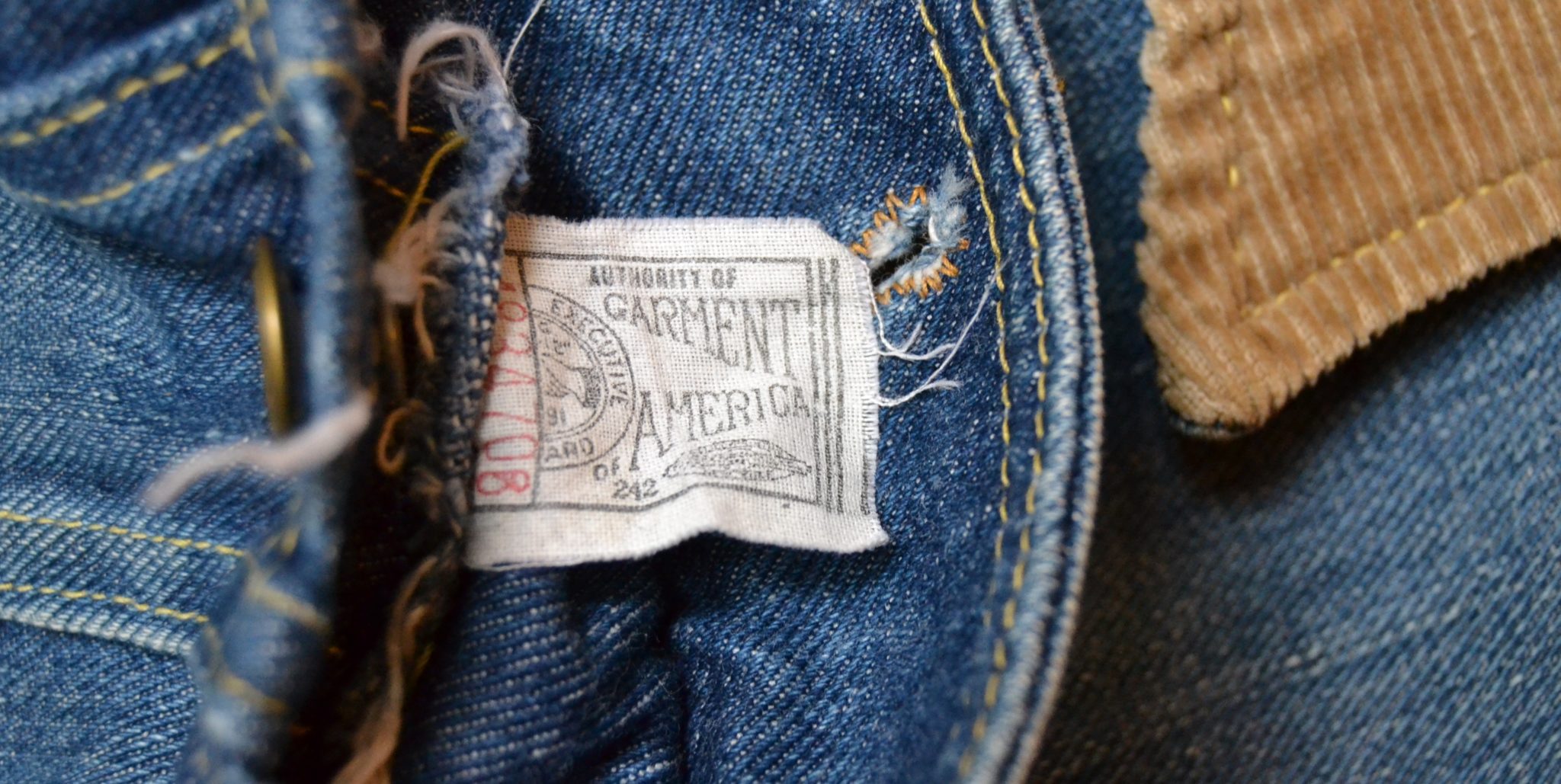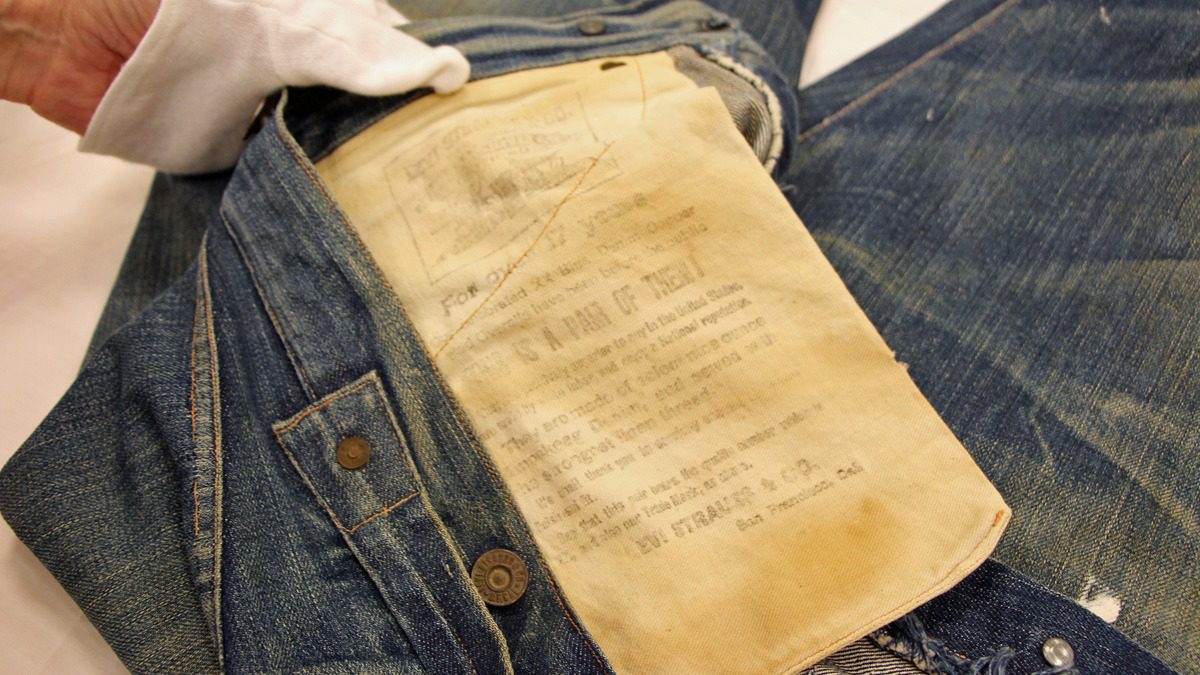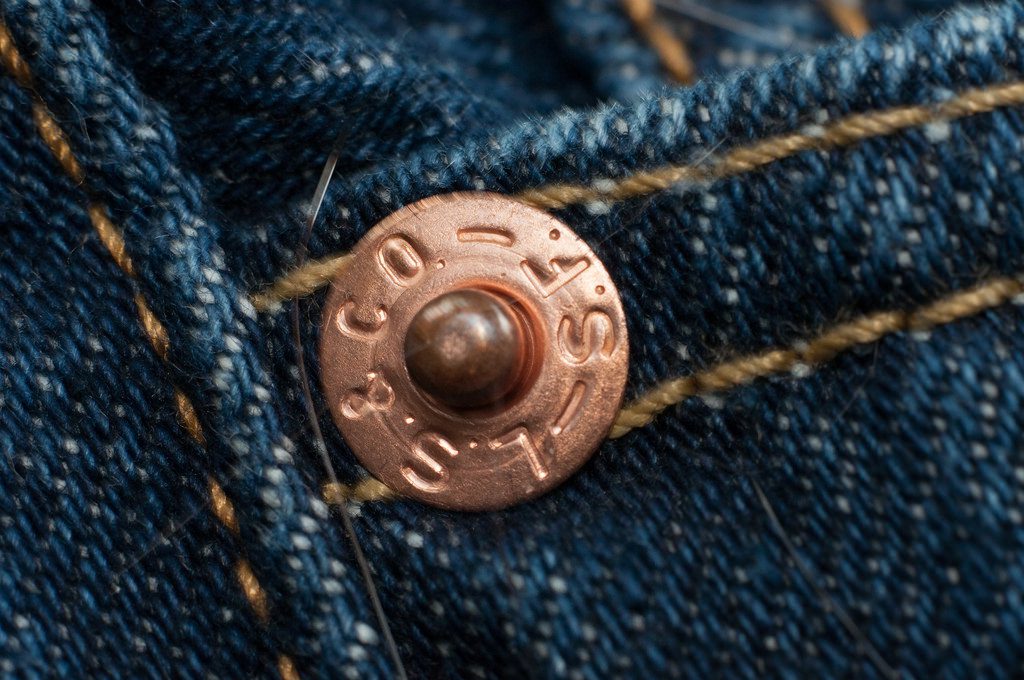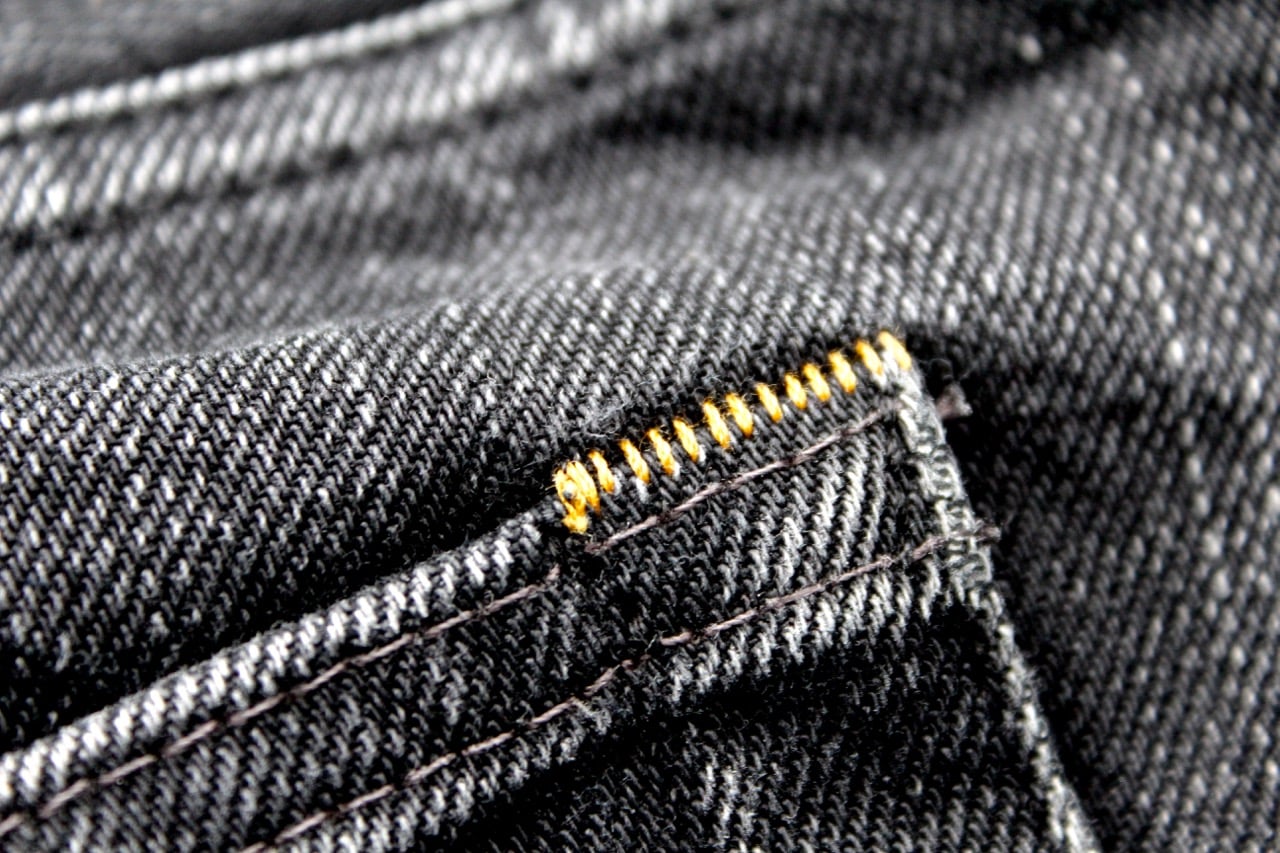The History of the Features That Are Holding Up Our Jeans
As I’ve discussed in my previous article on branded defining features, denim makers have used built-in features, like sewn-on arcuates and leather brand patches on jeans to differentiate their product from that of their competition.
Many of these defining features arose from an improvement on the original jean design. Features such as the copper rivet initially served to make jeans more durable, and in itself became one of the first branding tools.
In this member resource, I will look at all of the features that jeans makers use—and have used—to make our jeans fit right, and more importantly, not fall down while you’re wearing them.
By understanding how these features have contributed to the evolution of the modern jean, you will better understand why jeans are constructed the way they are and advise customers on how to select a pair that will fit correctly.
The three episodes in the series about the defining features of jeans focus on:
- Features that make jeans durable and practical
- Features that help you differentiate one brand from another
- Features that make jeans fit and add support (this episode)
The Yoke
One of the earliest features added to ‘waist overalls,’ as early jeans were known, was the yoke.
When I say ‘yoke,’ I don’t mean the hitch that allows an animal to pull a plough. Instead, take a look at the backside of your jeans; chances are you’ll have a ‘v-shape’ running down from the waistband to the centre seam.
In fact, considering that most men’s trousers featured no yoke but achieved a similar result through the use of darts to taper in the waist, we can consider the yoke as one of the defining features of jeans.

- The yoke is a reinforced section under the waistband
The original jean, or ‘waist overall,’ sat high on the wearer’s waist, meaning the waistband was smaller than of the hips of the wearer.
In order to make the jeans fit properly, the waist overall would feature a yoke that made the garment wider in the hips, yet cinched inwards towards the waist. This meant that, whilst being worn, the jean would have a hard time slipping any lower than the wearer’s hips.
In today’s day, most prefer to wear their jeans much lower; just above or directly on the hip. You might think this change in style would render a feature designed to keep the jeans above the hips obsolete, and yet we still find a yoke on almost every pair of jeans today.
That’s because jeans manufacturers identified that the yoke, aside from holding up the garment, also changed the way it sat on the wearer.
Despite the move towards flatter yokes, some jeans still have a deep ‘V’ yoke, with it starting higher up the side seams and meeting at the central, back seam at a much steeper angle. By altering the depth of the yoke, jeans makers can change the silhouette of the jeans itself, making the fit more square or more curvy, and (almost) tailor fits to customers depending on their body shapes.
Today, you might see phrases like ‘round-’ or ‘square top blocks,’ which translate to how much curve a pair of jeans have between the hips and the waistband. Jeans with a rounder top block will give a more flattering fit for wearers who are fuller in the hips whereas square top blocks fit slimmer profiles snugly.
Whilst the yoke came about as a method of ensuring a proper fit on a pair of jeans, in itself it was not enough to ensure that a pair of pants would stay up during a hard day’s graft. Denim makers also included features that were almost ubiquitous on every trouser and pant of the late 1800s: the cinch.
The Cinch
Many of the original features designed to hold up a pair of jeans have been consigned to history with the changing consumer tastes and fashions. Nevertheless, they’ve influenced how jeans are constructed today. Some features are even making a comeback: I myself look long and hard for that pair of jeans that sport a historically accurate cinch.
Although not a feature that is exclusive to the design of jeans, the cinch was adopted early on by manufacturers. Having gone under many names from a ‘martingale’ to the ‘back buckle,’ the cinch would literally cinch in the waistband even further, allowing the jean to fit snugly on the waist yet still comfortably loose on the butt and hips.
Before the widespread popularity of belts, the cinch found its way on almost every pair of jeans from the late 1800s to the late 1930s.
Cinches would originally be placed on the waistband—and in cases like Levi’s, be reinforced with a rivet on either side—and would comprise of two strips of denim held together with a buckle that could be used to cinch in the waistband when worn.
Gone But Not Forgotten
By the early 1920s, belts were becoming an everyday item no longer reserved for decoration or military uniforms. This change in tastes was reflected in the addition of belt loops alongside the cinch, as introduced by Levi’s in 1922.
Essentially, this allowed customers to choose between holding up their jeans the old-fashioned way with a cinch, or keep up with the new times and wear a belt.
Opinion and personal choice were polarised between younger and older generations of jeans wearers; retailers famously kept a large pair of scissors behind the counter with which they could cut off the cinch, should the customer desire it.
Whichever way customers’ tastes leaned towards, by keeping both options, many jeans brands ensured their garments would be attractive to new, younger customers whilst still catering to loyal, long-time customers too.
By the mid-40s, though, the cinch had been consigned to history and the belt was the de facto method of holding up your jeans. Indicative of this change in fashion tides was the release of the Levi’s WWII 501 model, which featured only belt loops, no cinch and no button suspenders (which I’ll talk more about later).
Nowadays, even though a classic five-pocket jean you pick up in a store won’t feature a cinch, the last decade has seen a revival in the interest of true vintage and vintage-inspired jeans. Although still very much in the realm of die-hard denimheads, the cinch is making a comeback on the jeans of many denim brands and even becoming a defining feature of brands like RRL’s range.
To take Rising Sun’s ‘Blacksmith’ model as an example, the cinch forms a sweeping arc across the rear of the garment and goes beyond being merely a method of holding your jeans up, taking on the role of a focal point of the jeans themselves.
This interest rides very much on the back of a wave of customers looking for garments with ‘heritage,’ which draw direct inspiration from the pioneering days of denim, with models sporting boxier fits and wider leg openings.
The cinch might be gone from the mainstream for now, but customer interest has resulted in several attempts to reinvent the cinch, featuring both on Levi’s mainstream 503 model, their now defunct Engineered product range, and the Tapered jeans from Lee 101 sports a cinch on the back.
Suspender Buttons
Another feature that appears prominently on older jean models and most pants prior to the 1930s is suspender buttons. They, along with the back cinch went hand-in-hand on every pair of garments before belts were the norm.
Back in the day, most jeans featured two buttons on the back of the jean and two on either side on the front, which were used to ‘anchor’ the suspenders to the garment.
One could argue that this method of holding your jeans up has been the most effective to date, as even a poorly fitted belt could—and does—allow jeans to fall below where they should sit. With early jeans being incredibly high-waisted and loose fitting, suspenders made for a practical and affordable way for holding up and taking off pants.
After the First World War, many younger men had grown accustomed to wearing belts as part of their military uniforms and brought this tradition home with them to civilian life. Furthermore, younger men were choosing to forgo the traditional men’s outfit, consisting of a waistcoat and a coat in favour of just a shirt. This meant that suspenders would be left exposed and, considering that in the 20s they were seen as underwear, they were not something that people would want to show the world.
However, if we refer back to the defining jeans timeline that is Levi’s, we can see that their early 20th century models featured a cinch, belt loops and suspender buttons, allowing their customers to choose how they held their jeans up.
Customers could ask shop clerks to snip off the cinch and even take off the suspender buttons should they want to wear their jeans ‘the new way.’ By 1937, Levi’s had removed suspender buttons as a standard feature of their jeans but still produced ‘press-on’ buttons that could be purchased and hammered on, should the wearer be a die-hard fan of suspenders.
Along with the cinch, jeans featuring suspender buttons have seen a revival with the rise of ‘heritage fashion’ and have had some successes in the mainstream, featuring on Lee’s Logger model amongst others.
Early 20th-century jeans wearers were often fairly polarised in how they wore their jeans: either you were a ‘belt man’ or a ‘suspenders man’ but rarely ever both. Another defining feature of jeans that has been even more polarising for wearers has been the fly.
Buttons Versus Zippers
Why the heck did you put a zipper in your jeans? It’s like peeing into the jaws of an alligator.”
So go the famous words of one anonymous customer who wrote to Levi’s when they introduced zippers on their flies in the 1950s. Today, we take the zipper for granted and their ease of use means they are appearing more and more often on today’s high street jeans. However, for many denim purists, however, it’s buttons on the fly or nothing at all.
Before the invention of the zipper in 1913 by Swedish-American Gideon Sundbäck, all pants were fastened with buttons (or lace-ups, if you go really far back), which were considered the norm for jeans and overalls. Lee was the first jeans maker to put zipper in jeans, in the 1920s.
With the button fly being considered somewhat ‘lacking in modesty,’ manufacturers favoured the zipper, which was easier to do up and offered a sleeker, flatter profile along the crotch. This is an aspect of jeans construction that has carried through to the modern day, with the majority of jeans made for women sporting a zipper over a button fly. Furthermore, with today’s fashion for tighter, and skinnier fitting jeans, often a button fly adds unnecessary bulk to the crotch area and can stretch and distort the profile of the garment.
In the end, for denimheads, the button fly is usually the fastening method of choice, both for their place in denim history and the interesting fades they create on the fly over time.
Use Knowledge of The Past To Influence A Sale Today
Over this series about the defining features that make a pair of jeans what they are, we’ve talked about features that have improved functionality, features that have branded a product—and in some cases become iconic features of a pair of jeans—as well as features that have grown out of necessity, like keeping a pair of jeans up.
By understanding the history of how the modern jean has evolved to what we buy in stores today, we can better build a narrative for our customers.
These narratives can give context to why a pair of jeans is sewn in a particular way. They can justify seemingly significant price tags for a customer and give a greater appreciation for the level of skill that goes into creating a really good pair of jeans.
Share




